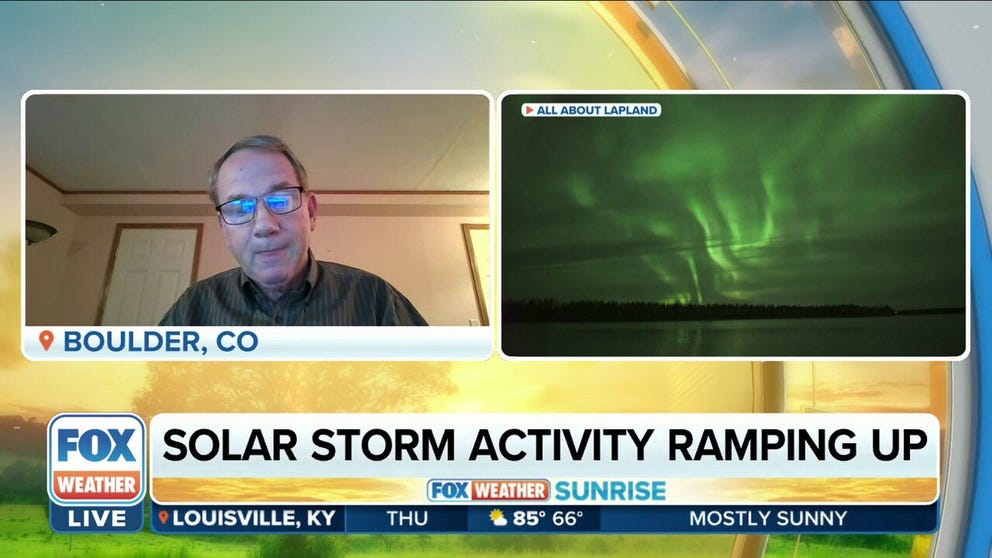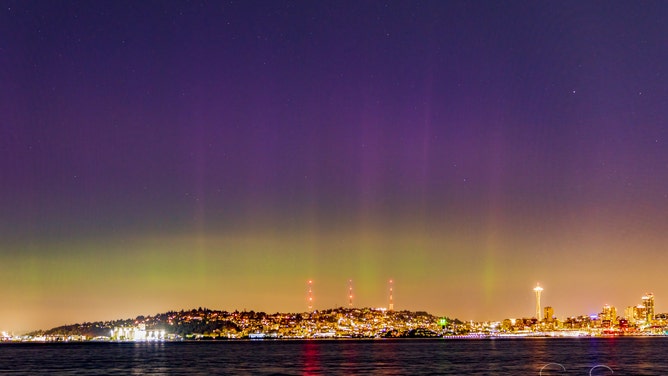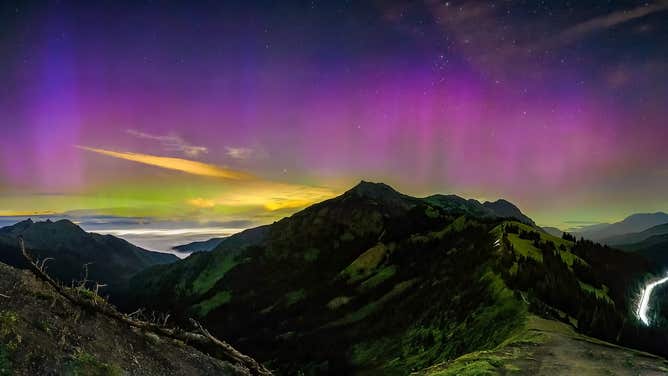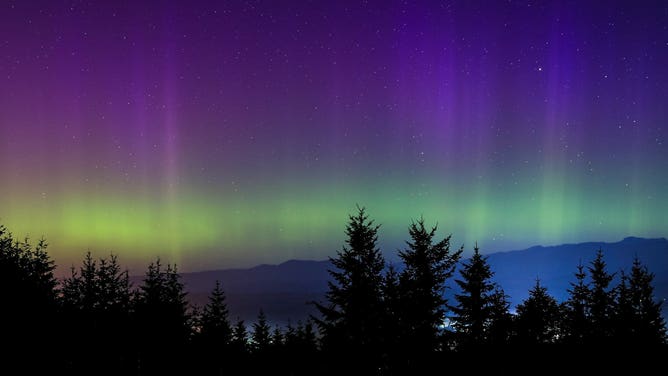Geomagnetic storm: When the Northern Lights will be visible in the US
Northern lights could be visible if the skies are clear in the northern U.S. on Wednesday and Thursday evenings.
Geomagnetic storm to produce Northern Lights this week
NOAA Space Weather Prediction Center experts have been monitoring the sun and forecast a G3 geomagnetic storm. William Murtagh with NOAA Federal, goes into more detail about this geomagnetic storm.
A solar storm impacting Earth is expected to briefly interrupt some communications and put on a dazzling display of the northern lights from coast-to-coast through Friday.
The National Oceanic and Atmospheric Administration’s Space Weather Prediction Center has issued a Geomagnetic Storm Warning and expects North America to see the greatest effects on Thursday but warns any day through the end of the workweek could be impacted.
Right now, experts believe most of the effects will be minor, but there is a chance that the event could reach a level 3 out of 5 on the geomagnetic storm severity scale.
At a level 3, NOAA warns power grid fluctuations can occur, satellite irregularities are possible, and radio and GPS signals may temporarily fail or become weak.
"If you're an astronaut, you have to pay attention, and if you are an airline crew, that does a whole lot of polar routes. In terms of actual like radiation effects for the general public, there are very few," said Dr. Laurel Rachmeler, the head of the Solar & Terrestrial Physics section of NOAA's National Centers for Environmental Information.
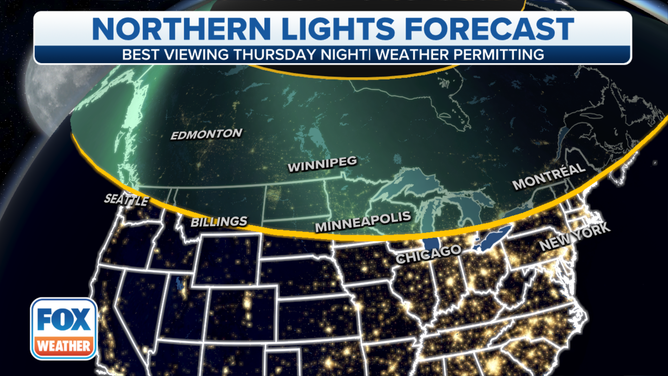
Northern lights are possible across the northern U.S. on Thursday.
(FOX Weather)
GEOMAGNETIC STORM CAUSES DESTRUCTION OF 40 NEW STARLINK SATELLITES
Impacts are expected to remain north of the 50 geomagnetic latitude, and NOAA says an aurora may be seen as far south as Pennsylvania, Iowa and northern Oregon.
The best times to view the aurora will be between 11 p.m. and 4 a.m. on Wednesday and Thursday nights.
Major cities included in the potential viewing zone include: Seattle, Minneapolis, Milwaukee, Green Bay, Detroit and Syracuse, New York.
Space weather experts warn the event could be strong and seen by more residents than a typical event due to the sun’s synchronized release of clouds of plasma and electrically charged particles.

Eruptions leaving the sun in mid-August.
(NASA)
The first in a series of eruptions is thought to have left the sun on August 14 and traveled at a rate of around 1,000,000 mph towards Earth.
Since there were two eruptions and the second larger episode overtook the first in space, the event is known as a cannibal coronal mass ejection.
Northern Lights may be visible in parts of U.S. thanks to geomagnetic storm
Dr. Jim Spann, Space Weather Lead at Heliophysics Division at NASA, talks about the strong geomagnetic storm headed towards Earth.
NOAA's GOES-18 satellite Solar Ultraviolet Imager (SUVI), which helps forecast space weather, also captured eruptions leaving the sun on August 15 and 16. The orange-red image above measured plasma at 50,000 degrees Kelvin in the sun's atmosphere.
THESE ARE THE 5 CATEGORIES THAT MEASURE GEOMAGNETIC STORMS
The last light show created by a solar storm over North America happened around July 19.
The aurora was so bright that photographers captured the colorful show even in the heart of Seattle, where light pollution typically mutes visibility.
NASA says on the current solar cycle, activity is expected to ramp up until the solar maximum is reached around 2025.
A typical solar cycle lasts about 11 years, as the sun's magnetic fields completely flip, impacting activity on the star's surface.
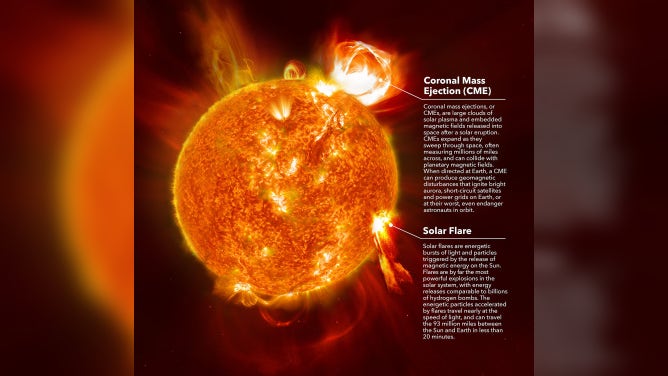
Explanation between a Coronal Mass Ejections and Solar Flare
(NASA)
